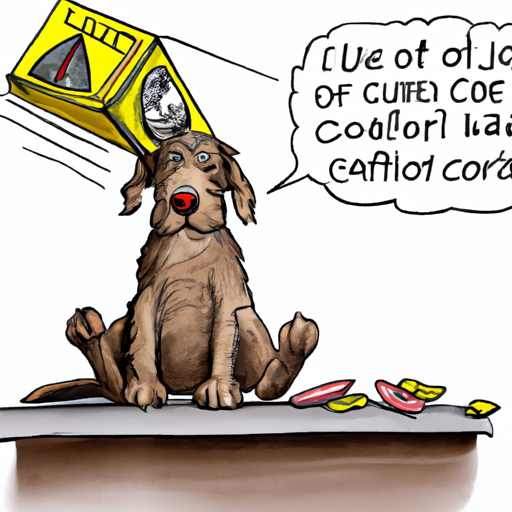If you’re a dog owner, you’ve likely heard the cautionary phrase, “Never feed your dog chocolate“. We all love treating our pets from time to time, but when it comes to chocolate, even the smallest amounts can be toxic to dogs. This article will provide a comprehensive understanding of why chocolate is harmful to dogs, how much is considered toxic, and what to do if your dog ingests chocolate.
Contents
- Why is Chocolate Toxic to Dogs?
- Theobromine: The Silent Killer
- How Much Chocolate is Toxic?
- What to Do if Your Dog Eats Chocolate?
- Preventing Chocolate Toxicity
Key Takeaways
- Chocolate contains theobromine, which dogs cannot metabolise effectively.
- The toxicity level depends on the type of chocolate, the amount consumed and the dog’s weight.
- If your dog ingests chocolate, seek immediate veterinary attention.
- Prevention is the best cure.
Why is Chocolate Toxic to Dogs?
Chocolate is derived from cacao beans which contain caffeine and a compound known as theobromine. While humans can easily metabolise these substances, dogs process them much more slowly, leading to a buildup in their system that can be lethal.
Theobromine: The Silent Killer
Theobromine is the main culprit behind chocolate’s toxicity in dogs. Even a small amount can cause symptoms like vomiting, diarrhea, rapid breathing, and increased heart rate in dogs. In severe cases, it can lead to seizures, heart failure, and even death.
For a deeper understanding of how theobromine affects dogs, check out this article from PetMD.
How Much Chocolate is Toxic?
Determining the toxicity of chocolate depends on three factors: the type of chocolate, the weight of your dog, and the amount consumed.
Here’s a comprehensive table explaining the levels of theobromine found in different types of chocolate:
| Type of Chocolate | Theobromine per 1 oz (28g) |
|---|---|
| White Chocolate | 0.25 mg |
| Milk Chocolate | 58 mg |
| Dark Chocolate | 130 mg |
| Baking Chocolate | 393 mg |
For instance, milk chocolate contains less theobromine than dark chocolate, meaning a dog would have to consume more milk chocolate to reach toxic levels.
On the other hand, a small piece of dark chocolate can be harmful to a small dog. As a general rule, the darker and more bitter the chocolate, the more dangerous it is.
For more information on the different types of chocolate and their potential effects on dogs, visit this page from Vets Now.
What to Do if Your Dog Eats Chocolate?
If your dog ingests chocolate, it’s important to act fast.
- Identify the type and amount of chocolate consumed.
- Contact your vet immediately. They will likely ask for your dog’s weight, the type of chocolate, and the amount consumed.
- Follow your vet’s advice. They may instruct you on how to induce vomiting or advice you to bring your dog in for treatment.
Remember, it’s always better to be safe than sorry. Even if you’re unsure, contact your vet anyway.
To better understand the signs of chocolate poisoning in dogs, visit this helpful guide by OneTopDog.
Preventing Chocolate Toxicity
The best way to prevent chocolate poisoning is to keep all chocolate out of your dog’s reach. Educate everyone in your household, especially children, about the dangers of feeding chocolate to dogs.
For more tips on how to keep your dog safe, you can read this guide on OneTopDog.
Frequently Asked Questions
Q: How soon will a dog show signs of chocolate poisoning?
A: Symptoms usually appear within 6 to 12 hours after ingestion.
Q: Can a small amount of chocolate kill a dog?
A: Even a small amount can be dangerous, especially if it’s dark or baking chocolate.
Q: What should I do if my dog eats chocolate but seems fine?
A: Always contact your vet. Symptoms may not appear immediately.
Remember, every dog is unique and what might not be harmful to one could be fatal to another. When in doubt, always err on the side of caution.
To conclude, while we humans might find chocolate a delightful treat, it’s a potentially deadly one for our canine companions. Your dog might give you those adorable puppy eyes, but resist the urge to share your chocolate with them. A moment’s indulgence is simply not worth the risk.
For more tips on ensuring your pet’s well-being, visit OneTopDog.



